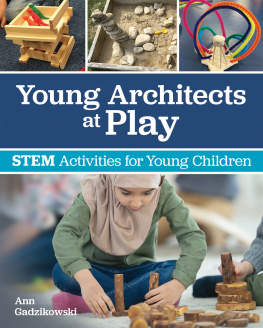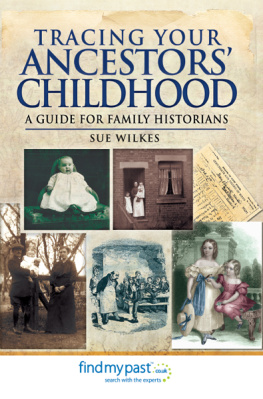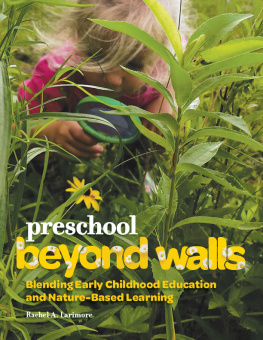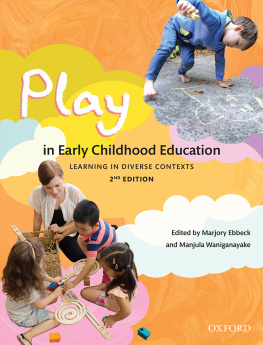
Published by Redleaf Press
10 Yorkton Court
St. Paul, MN 55117
www.redleafpress.org
2015 by Ann Gadzikowski
All rights reserved. Unless otherwise noted on a specific page, no portion of this publication may be reproduced or transmitted in any form or by any means, electronic or mechanical, including photocopying, recording, or capturing on any information storage and retrieval system, without permission in writing from the publisher, except by a reviewer, who may quote brief passages in a critical article or review to be printed in a magazine or newspaper, or electronically transmitted on radio, television, or the Internet.
First edition 2015
Cover design by Elizabeth MacKinney, Berry Graphics
Interior design by Erin Kirk New
Typeset in Scala
Library of Congress Cataloging-in-Publication Data
Gadzikowski, Ann.
Creating a beautiful mess: ten essential play experiences for a joyous childhood / Ann Gadzikowski.
pages cm
Includes bibliographical references.
ISBN 978-1-60554-387-1 (ebook)
1. Parenting. 2. Families. I. Title.
HQ755.8.G323 2015
306.874dc23
2014047334
TO MY DAD,
for teaching me the value of a good knock-knock joke
CONTENTS
Thank you to all my beautifully messy playmates, past, present, and future. Many of the ideas expressed in this book were inspired by happy memories of my own childhood playing with my brothers, my parents, my grandma, my neighbors and friends. Later, when I was a student of child development at the Erikson Institute, Professor Lorraine Wallach first introduced me to the academic study of play. Im grateful to Lorraine and all the other mentors and teachers who have guided my work. A special thank-you to my friend Damian Hughes for serving as my board games consultant.
I also owe many thanks to the children, families, and teachers Ive worked with over the years in early childhood programs. Im especially grateful to the parents of students in Northwestern Universitys CTD Leapfrog program; the questions you asked about play inspired this book.
Many thanks to all my Cleveland Street neighbors. Watching our kids play Ghost in the Graveyard at block parties convinced me that play is still play, even in the twenty-first century.
And Im grateful for the support, encouragement, and expertise of my Redleaf team, Kyra Ostendorf, Danny Miller, and Alyssa Lochner.
But most of all, I want to thank my very favorite playmate, my daughter, Alexa. All the best fun began with you.


Most books about this topic start with an argument in defense of playa litany of reasons we should all value play as a legitimate use of childrens time and energy. I choose instead to begin this book on the offense, ready to score, prepared to rack up an easy victory on behalf of Team Play. I can do this because the strongest evidence for the value of play already lives in you, in your heart and mind, fueled by all the positive memories of play from your own childhood. Remember that time you lay in the grass and rolled down a hill, the sky spinning over your head, the smell of wet mulch in your nose, laughing out loud when you crashed into your best friend at the bottom of the hill? Or that time you built a castle out of a cardboard box, with a maze of rooms and corridors inhabited by wizards and elves? Remember when you cuddled that beloved soft, stuffed bear, surrounded by a fort of pillows and cushions, whispering secrets in your bears fuzzy ear? You may not have these exact memories of these exact play experiences, but you probably remember something very similar.
We each have our own direct experience with the excitement and pleasures of play. As parents, we often use our own memories of childhood play as a sort of rubric for measuring our childrens experiences. In my work as a teacher and director in early childhood education for more than twenty-five years, Ive listened to a lot of parents talk about play. Parents often wonder if play today is different from what they enjoyed as children. They sometimes dont recognize play in their childrens behavior, especially when children use toys and materials, such as iPads, that they never had. Many parents wonder if technology has a negative effect on their childrens growth and development. Most of all, parents just want to know if their children are normal, happy, and healthy.
The good news is that play is still play. It may look a little different, but it really hasnt changed. In this book I will remind you of the play you experienced as a child and show you the connections between those memories and the play your child is experiencing today. Some of the toys and the vocabulary of play are a bit different, but the essential play experiences are timeless.
What Is Play?

Lets take a moment to define play and ground our conversation in a shared understanding of the experience of play in the lives of children. I prefer a broad and generous definition. Play is pretty much any activity that is done purely for pleasure. While some people may find pleasure in their work, or even in chores such as washing the dishes, thats not really play, because in play, pleasure is the primary and often sole reason for doing it. Play is just for fun.
Play is pretty much any activity that is done purely for pleasure.

Play is often, but not always, something children do. But sometimes adults can play, especially when the adults are parents playing with their children. Play often, but not always, involves toys. In truth, toys are not necessary for play. The pleasure of play usually comes from freedom and spontaneity, a lack of goals or structure. When we play with something, it usually means we are not trying to accomplish a specific goal; were just experimenting and seeing what happens. Play can be joyous. Children often smile and laugh when they play. But play can also be absorbing. Instead of smiles, childrens faces may instead show great concentration and focus while they play. Focused, intense play is still play.
The Ten Essential Play Experiences

This book grew from my talking with parents about their children and listening to parents questions about their childrens behavior and development. Ive noticed that most parents already have a good understanding of what play is and how their children benefit from it. The concerns I hear from parents have to do with balance. Most parents wonder how to balance their own family and work lives, and they are also concerned with how to find the balance between their childrens free, unstructured time at home with planned activities outside the home such as music lessons and organized sports. Also, many parents wonder if their children are spending too much time involved with technologywhether its playing computer games, watching television, or using an iPad.
My concern is less about what children are doing and more about what theyre not doing. When discussing how children should be spending their time, I try to help families refocus on the goal of living balanced lives. Children benefit from exposure to a broad variety of experiences. If they are spending most of their free time doing one thing, thats probably not a good idea. So when Im asked, Is my child doing too much [fill in the blank]? I like to reframe the question and ask, Is there anything missing from your childs life? Is your child enjoying a full range of play experiences? This concept of balance in childrens play experiences is similar to the concept of nutritional balance. Suppose I drop by your house one random day and find you eating a bowl of cereal and you ask me, Do you think I eat too much cereal? I wont know the answer to that question unless I ask about what else you usually eat. Serving a balanced diet of play to your child follows the same pattern. If youre wondering whether your child spends too much time on the computer, or too much time playing alone with dolls, or too much time building with Lego bricks, then you need to look at what other play experiences your child is having. Is there variety? Is there balance?
Next page










